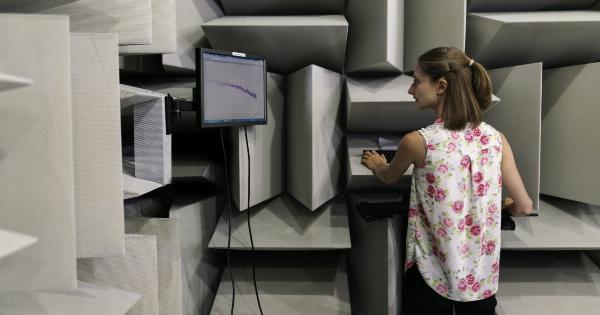Distractions are often seen as obstacles to focus and productivity. In a world filled with constant connectivity and endless sources of interruption, it is easy to understand why distractions are generally frowned upon.
However, recent studies suggest that certain types of distractions can actually be beneficial in aiding focus and enhancing productivity. This article explores the concept of using distractions as a tool to improve concentration and offers strategies for incorporating them into our daily routines.
The Paradox of Distractions
Distractions, by definition, divert our attention from the task at hand. They can be anything from a buzzing phone to a co-worker engaging in a conversation nearby.
Traditional wisdom dictates that distractions hinder focus and should be minimized or eliminated entirely. However, research has shown that certain types of distractions can have the opposite effect, serving as a reset for our brains and helping us maintain focus over extended periods of time.
The Role of Cognitive Control
To understand why distractions can aid focus, it is important to delve into the concept of cognitive control. Our brain’s ability to regulate and control our thoughts, actions, and attention is a crucial factor in maintaining concentration.
When we concentrate on a task for an extended period, our cognitive control resources become depleted, leading to waning focus and reduced productivity. Distractions can provide our brains with a necessary break, allowing cognitive control to recharge and ultimately improve our ability to stay focused.
The Power of Micro-Distractions
Micro-distractions, short and non-intrusive interruptions, have gained attention for their potential benefits in aiding focus.
These quick distractions, such as checking social media for a few minutes or engaging in a brief conversation with a colleague, can help prevent cognitive depletion and enhance concentration. Research has shown that engaging in micro-distractions during work intervals can actually lead to improved overall performance.
Structured Distraction Techniques
While distractions can be beneficial, it is important to incorporate them in a structured manner to maximize their advantages. Implementing distraction techniques should involve setting specific intervals or triggers for engaging in brief distractions.
For example, taking a five-minute break every hour to stretch, grab a healthy snack, or engage in a relaxing activity can help maintain focus for more extended periods later on.
The Pomodoro Technique
The Pomodoro Technique, a time management method developed by Francesco Cirillo in the late 1980s, is an effective way of incorporating structured distractions into work routines.
The technique involves breaking work periods into 25-minute intervals, called “pomodoros,” separated by five-minute breaks. After completing four pomodoros, a more extended break of 15-30 minutes is taken. This method exploits the benefits of micro-distractions while providing a structured framework for increased productivity.
Mindfulness and Distractions
Mindfulness practices emphasize being fully present in the current moment. Paradoxically, this focus on the present can make us more susceptible to distractions, as we become aware of the multitude of stimuli surrounding us.
However, integrating mindfulness with distractions can be a powerful tool for enhancing focus. By acknowledging distractions without judgment and gently redirecting attention back to the task, we can train our minds to become more resilient and less affected by external interruptions.
Creating an Optimal Environment
Distractions within our physical environment can significantly impact our ability to focus. Minimizing external disturbances and creating an optimal work environment is crucial for maintaining concentration.
Strategies such as noise-cancelling headphones, designated work areas, and minimizing clutter can help reduce the influence of distractions. Additionally, incorporating elements that enhance productivity, such as natural lighting or background music, can create a positive and conducive atmosphere for focused work.
Embracing Technology
Technology is often viewed as a major source of distractions. However, when used intentionally, it can also serve as a valuable aid to focus. Numerous apps and browser extensions are designed to help manage distractions and increase productivity.
These tools allow users to block access to time-wasting websites, receive notifications for structured breaks, or even provide ambient noise to enhance concentration. By harnessing the power of technology, we can transform potential distractions into valuable tools for improved focus.
Emotional Regulation and Distractions
Our emotional state plays a significant role in our ability to focus. Stress, anxiety, and negative emotions can be major distractors, impairing concentration and productivity.
Emotion regulation techniques, such as deep breathing exercises or practicing gratitude, can help manage these distractions by promoting a calmer mental state. By addressing emotional distractions, we create a better foundation for sustained focus and increased productivity.
The Role of Physical Activity
Engaging in physical activity has been shown to have various cognitive benefits, including enhancing focus and attention span. Taking structured breaks to engage in light physical exercises or going for a short walk can serve as beneficial distractions.
Physical activity increases blood flow to the brain, stimulates the release of endorphins, and promotes mental clarity. By incorporating movement into our routines, we can effectively use distractions to optimize our focus.
Conclusion
While distractions are often seen as hindrances to productivity, they can, in fact, serve as aids to focus when used appropriately.
By embracing micro-distractions, incorporating structured techniques like the Pomodoro Technique, practicing mindfulness, creating optimal work environments, leveraging technology, regulating emotions, and engaging in physical activity, we can harness the power of distractions to enhance focus and productivity. Balancing focused work periods with intentional breaks can lead to improved performance, increased creativity, and a healthier approach to accomplishing tasks in our increasingly distracted world.































